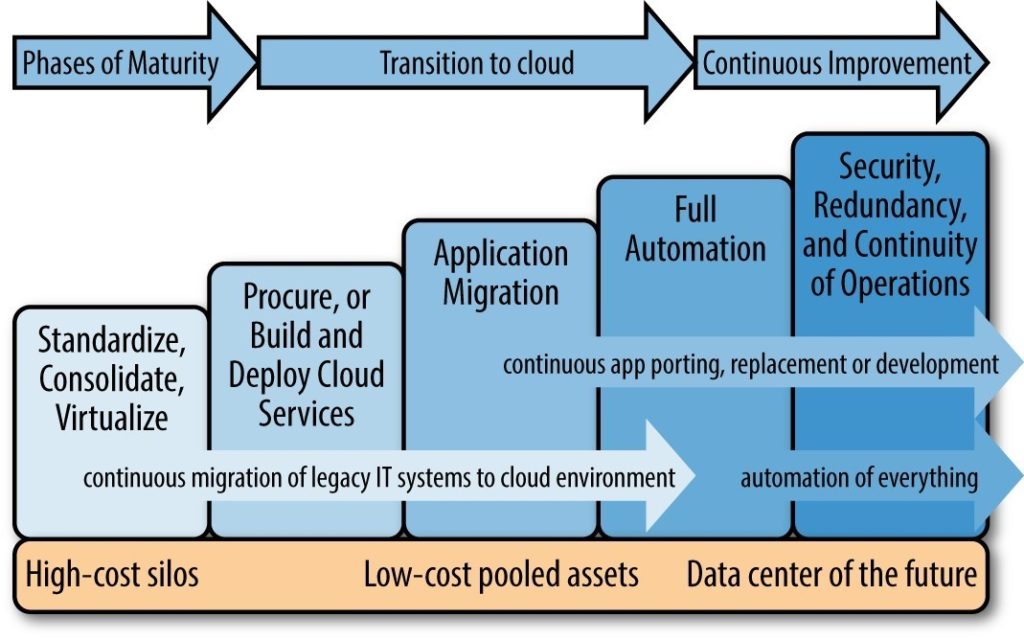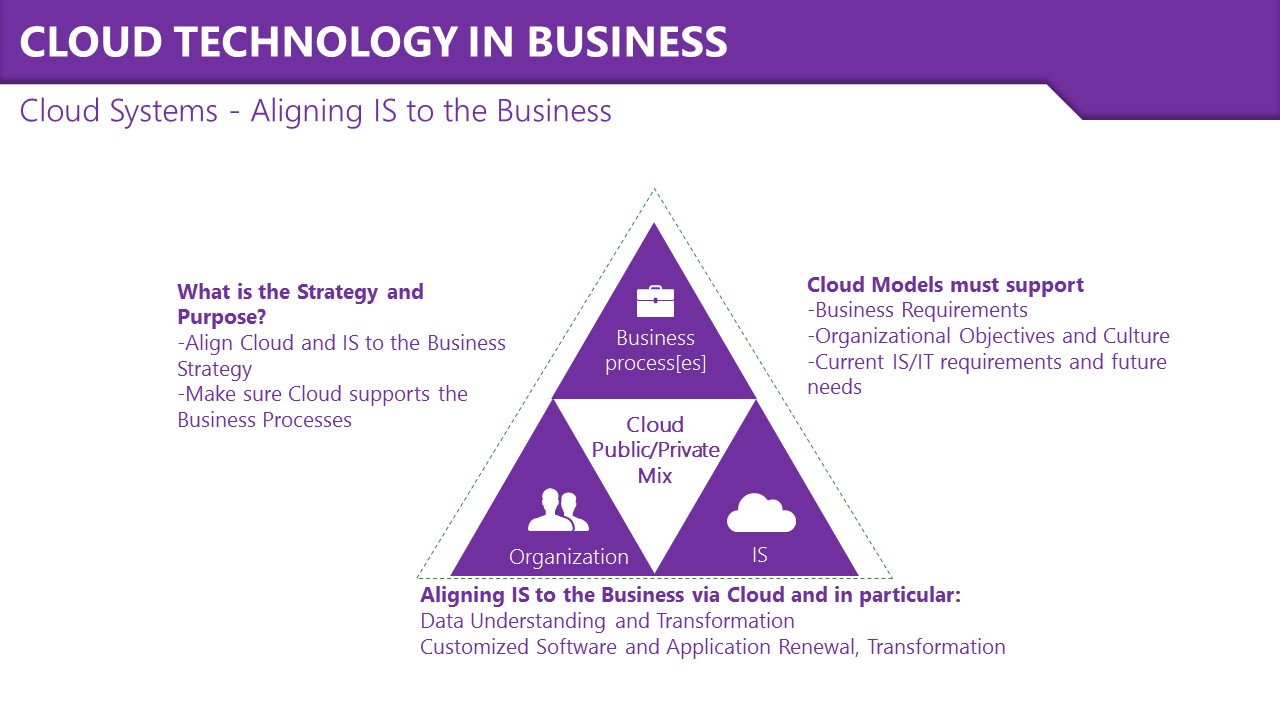Enterprise Architect: Transformation by aligning IS and Cloudy with the Business
Blog articles about Cloud Tech
Business can be transformed only by aligning IS to the business objectives. Information Systems are the key component in business process and best of breed, development. If IS does not align with the business, then the organisation will suffer and incur a competitive disadvantage.
Cloud is the great enabler of business transformation. But even then, it must be aligned with business strategy and objectives. Within Cloud AWS is the reference architecture one should follow.

It is well and good to move your estate into a cloud platform, but there must be a tangible business benefit and rationale to do so. Reducing costs might be a reason, but the most important factor is alignment. Will moving to the Cloud or any other platform, more properly align information assets to the business strategy and purpose?
In that vein, culture and organisation must also be aligned and supportive of the business strategy. In many firms, these alignment issues are simply ignored and they lead to a competitive disadvantage.
Technologies & Processes firms need to understand
Open Standards, AWS, Lots of AWS, Azure, Agile methods (not easy, but lose the Waterfall), Java, HTML5, Angular, React.js, JSON, Rest, SOAP (some), API Gateways, DevSecOps, OOAD, Change management, OOAD, Design Patterns, NoSQL, MySQL, Cloud Adoption Frameworks, COBIT, NIST.
 To avoid:
To avoid:
- Buzzword Bingo.
- Ill-defined ‘Big Data’ projects which correlate unstructured data with not much except expensive projects and hyperbole.
- No Data Strategy.
- Most consultancy models which are in the main 20 years old.
- Academic ‘models’, paradigms from a static world.
- No documentation.
- Code that is not commented.
- Code that is not modular, component-based, or just plain bad.
- Lack of REST, Web Services, Customised DAO in Application architectures.
- Firms without Conceptual-Logical-Physical models of their IS and apps.
- Complexities like Open Stack, which very soon becomes a Closed Stack (can be okay if you need to build an on-premises cloud imitation, but don’t under-estimate the cost and complexity)
- No consideration of Operational models and costs when deploying to the Cloud
- Lack of automated and structured manual testing
Where the market is going
- Automation of most IS tasks.
- Some form of Agile development (customised to reality).
- Digitization of most processes.
- Patterns used in every deployment.
- APIs and Gateways (separation of duties and policies eg security, networking).
- Containers. Kubernetes to Orchestrate Docker.
- AWS. LAMP. Lots of AWS. If you don’t know AWS you don’t know the best of breed Cloud reference model.
- Angular/Node/React.JS. Python. Java is still king.
- Aligning processes around customer expectations.
- Hybrid Clouds. Multi Cloud Management (lots of issues with this).
- Dev/Ops. CI/CD. Jenkins. Chef. Code Deploy.
- Work flow automation.
- Desktops into a VDI model eg AWS Workspaces.
- Swapping expensive licensed estate for pay-as-you use models. SaaS.
- Security and ID management as a service.
- Teams as a Service [TaaS].
- Automated Cloud Backup and Recovery.
- Functions-as-a-Service aka ‘serverless computing’.
IP and value
With 20 years’ experience in building IS systems, including 10 in the Cloud, and having been involved with more than 150 firms worldwide there is an approach and methodology which works in aligning IS to the business. This IP will save firms time and money. Most importantly, it is real, not academic, and not static.
2 MSc, IMBA, MA, HBA, Certificate in C.S., AWS solutions architect, various accreditation’s including ITIL. Know enough to be dangerous using COBIT, CAF, and a screwdriver.
